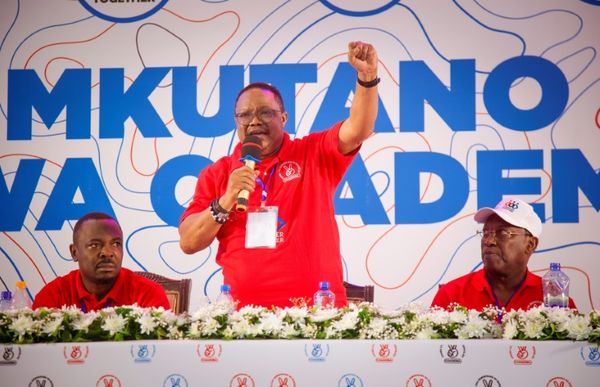
When you sit down for a meal, you are rarely eating just one thing. Whether it’s a dinner plate of food, last night’s leftover pizza, or a piece of toast and coffee, there are multiple ingredients touched by many hands that are coming together to sustain you in that moment. And in all of that work, and all of those resources present, there is an opportunity for a better world.
While our current food system has enabled the world to feed billions, it is also damaging to the environment and to eaters alike. It’s imperative that we begin to produce our food in better ways—ways that are more creative, equitable, and sustainable. How, and which, food gets to our plates is as big a determinant to planetary and public health as anything else you can name.
At this moment environmentalists, policymakers, and the agriculture and food industries are uniquely poised to make progress at the intersections of food, equity, climate, and sustainability. The need for this work is as urgent as it is profound, and notably, the appetite for this work is increasingly apparent in the general public.
A Morning Consult poll conducted for the Walton Family Foundation found that nearly 90% of Americans believe that it’s “important to update the agricultural system to encourage sustainable farming practices that support clean water and healthy, productive soil.” Roughly 80% of that same group favors modernizing the Farm Bill to support farmers as they implement more sustainable farming practices.
It is a sign of hope that in these profoundly divided times, something as essential as food can unite Americans across all divides. Policymakers, farmers, and food industry leaders should listen to—and learn from—consumers who want to see change. We should seize this opportunity for people and political parties to unite and break more sustainable bread together, for the common good of our communities and the planet.
A new report from the Boston Consulting Group conducted for the Walton Family Foundation explores a range of practices and technologies that can reduce net emissions from U.S. agriculture across three categories: how we grow, how we eat, and how we use land. Working across the public, private, and social sectors, we can make real progress reducing the environmental impact of our food system.
Much of the “how we grow” category includes practices that we have known are good for soil health and the environment for the last 50 years, including cover-cropping, no-till farming, and other sustainable farming practices that protect soil and water while producing food. The Farm Bill is an opportunity to build on the agriculture provisions in the Inflation Reduction Act to kick-start the transition to a more sustainable, climate-smart future for agriculture. This is a moment in which America can commit to the promise that growing food can be good for people and the planet—and that such food must be made available to all.
“How we eat” is of course equally important. For example, the differences between “conservative” and “optimistic” scenarios for shaping agriculture’s impact on climate depend a lot on whether people are moving toward greenhouse-gas-conscious diets, which also relates to increased demand for—and supply of—sustainable products. This is a place for the food industry in particular to meet the needs and wants of both people and the planet.
Finally, as we think about how we use land, we know that most of America’s current farmland should stay in production. Taking land out of production in the United States drives that growth to other parts of the world, which often results in deforestation—threatening biodiversity and releasing increasingly dangerous carbon along with it.
At the same time, America’s farmland ownership is based on a well-documented history of policies that have excluded African Americans, especially, as well as women and farmers of color in general from becoming and remaining agricultural landowners. The benefits of our nation’s natural capital—soil, water, the resources of land and sea—must be more accessible to wider sections of humanity and distributed more fairly.
None of these challenges are easy to address, but there are common threads among potential solutions. Improving just one “lever” can positively impact agriculture across the board. The benefits we yield will directly correlate to how strategic we are in our approaches, and how high we reach in terms of our aspirations for creating change.
The benefits of growing our food more sustainably—with more recycling of nutrients and an emphasis on biodiversity and equity—go well beyond the specific moves needed to slow and reverse climate change, as important as that is. A healthier and more just society ultimately depends on an agricultural system where more (and more diverse) people decide what is grown, and how it is produced, processed, distributed, and eaten.
If we don’t address the opportunities and challenges associated with what’s on our plates and how it gets there, it’s our children and grandchildren who will pay the price. The climate crisis, unequal distribution, and control of land, public health, food distribution, and access are all inextricably linked. It is time for us to do better, together.
Mark Bittman is the author of Animal, Vegetable, Junk: A History of Food, From Sustainable to Suicidal and the founder of The Bittman Project. Caryl M. Stern is the executive director of the Walton Family Foundation. The Walton Family Foundation is a partner of Fortune Next Gen.







